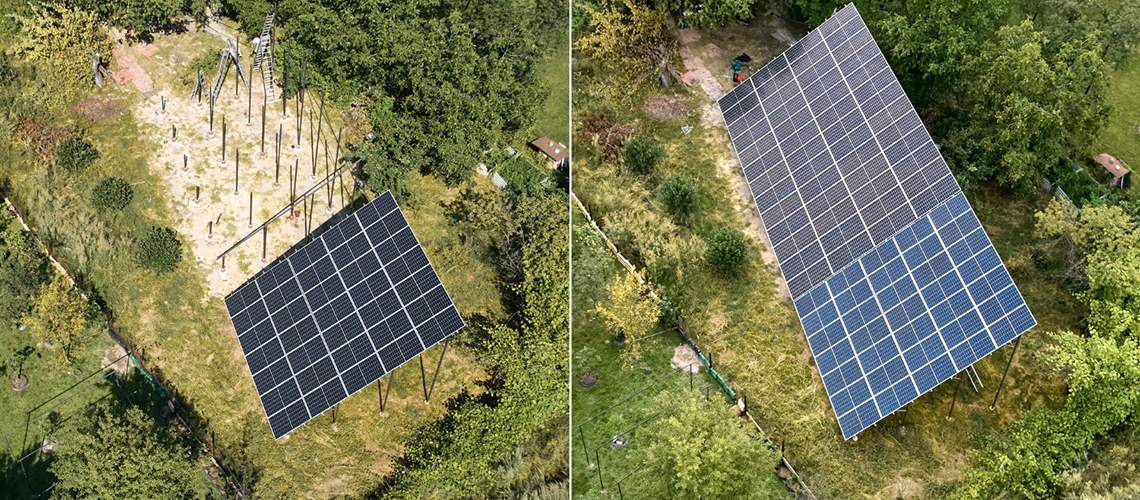Solar Rooftop vs. Solar Panels: What Do You Really Need?

When we talk about solar power energy in India, it's no longer just a buzzword; it's becoming a way of life. From large-scale utility solar parks to small setups on rooftops, solar is lighting up everything, quite literally. But as more people begin to explore renewable energy options, there’s one common question we hear all the time: “What’s the difference between solar rooftop and solar panels?” And more importantly, “Which one do I really need?”
At Jindal India Renewable Energy Limited (JIRE), a proud subsidiary of the BC Jindal Group, we’ve been working toward making renewable energy in India not only accessible but smarter and more sustainable. So let’s clear the air and help you decide whether a solar rooftop system or traditional ground-mounted solar panels are a better fit for your energy needs.
First, Let’s Talk About What They Are
As the name implies, rooftop solar panels are placed right on the roof of your home, office or industrial building. By utilising the existing structure, they not only save space but are also perfect for urban and semi-urban areas. On the flip side, ground-mounted solar panels are typically found in expansive solar farms or in locations where there’s plenty of land available for a dedicated solar setup.
Rooftop Solar: Compact, Convenient, and Cost-Efficient
If you’re a homeowner or running a business with decent roof space, rooftop solar might just be the perfect solution. Here’s why:
1. Optimal use of unused space
Rooftops are often just there. With a rooftop solar setup, you’re turning unused real estate into a power source.
2. No additional land needed
This is a huge plus in urban India, where land is expensive and limited.
3. Net metering benefits
Many states in India allow you to earn credits for excess solar power sent to the grid, cutting future electricity bills and turning your meter into a cashback machine.
4. Lower transmission loss
Since power is generated and used in the same place, there's minimal loss in energy conversion.
Whether it’s a residential flat, a school or an SME unit, rooftop systems offer a solid return on investment, both financially and environmentally.
Ground-Mounted Solar Panels: Built for Scale and Flexibility
Now, if you’re thinking bigger, like an industrial setup, commercial plant or a large institution with open land, then ground-mounted solar panels might be a better fit. Here’s why:
1. Customisable tilt and orientation
Since you’re building from scratch, you can optimise the layout for maximum sun exposure.
2. Easier maintenance and cleaning
Accessibility is better when panels are installed on the ground.
3. More scalable
Want to double your capacity in a few years? That’s easier with ground-mounted panels compared to rooftops.
That’s why many large solar panel manufacturers and developers in India choose ground-mounted systems for big projects, especially when paired with Battery Energy Storage Systems (BESS) for uninterrupted, round-the-clock power.
Which One Should You Choose?
It really depends on your situation. Here’s a quick cheat sheet:
| Scenario | Go for Rooftop Solar | Go for Ground-Mounted Solar |
|---|---|---|
| Have limited space | Yes | No |
| Own open land | No | Yes |
| Want a low-cost residential solution | Yes | No |
| Need a high-capacity industrial setup | No | Yes |
| Looking for faster installation | Yes | No |
What’s the Future of Solar Power Energy in India?
The future is both bright and sustainable. The government has ambitious targets for renewable energy in India, and private players like Jindal India Renewable Energy Limited are stepping up to the challenge.
With recent developments, like our 300 MW solar-plus-storage project from NHPC, we are not only investing in capacity but also in innovation. The move toward hybrid renewable energy models, along with BESS, is shaping a future where clean energy isn’t just about power; it’s about smart power.
Final Thoughts
Whether it’s a solar rooftop or ground-mounted solar panels, the bigger picture is clear: investing in solar is no longer optional; it’s essential. And while your needs may vary, the good news is that solutions exist for everyone.
At JIRE, backed by the BC Jindal Group, we’re committed to exploring every corner of the renewable energy landscape, from rooftops to rolling plains, and from solar to storage. So whatever your energy needs are today, know that the future is powered by the sun, and we’re here to help you harness it.